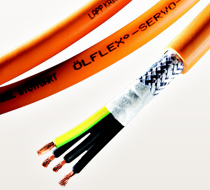 Are you flexible cable ready? You will be once you read this!
Are you flexible cable ready? You will be once you read this!
August 7, 2014 REDWIRE is news you can use from leading suppliers. Powered by FRASERS.
Posted by Lapp Canada Inc
Lapp Canada designs and manufactures durable and reliable electrical connectivity solutions that ensure maximum uptime f... Read more
Subscribe
Free REDWIRE e-newsletter

Similar to the muscle fibers bundled together in the human body that bends, twists and turns, so does flexible cable.
Flexible cable is adaptable to move, curve and change directions when under extreme external stress. Specifically manufactured to handle positioning in various tight, shifting applications, flexible cables are unique in its design to move in a multidirectional motion.
Flexible cable is used most notably in the automation, machinery and telecommunications sectors that have recurring, demanding motions. Mechanical applications in an automation plant, functions in a factory assembly line or installation of wiring inside computer and data processing equipment are just a handful of examples that benefit from flexible cable.
Now it’s your turn to learn. Find out the three basic flex type motions that are specifically engineered onto flexible cables to perform specific industrial applications.
BENDING FLEX
Coined as the “tick-tock” cable, bending flex cable simulates the motion of a pendulum that swings back and forth with one end of the cable remaining stationary.
The bulk of the cable stress is placed on two pivotal points: at the bend and where the load is applied. Ethernet cabling or semiconductor manufacturing applications tend to use this type of flex motion in their cables.
CONTINUOUS FLEX
Continuous flex cables can have a variation of moderate or high flexing capabilities depending on its specific application.
Mainly used for machine tool applications, small factory crane operations and packaging and handling systems, this specific cable rolls or flexes from side to side in a linear motion.
TORSIONAL FLEX
Torsional flex cables are designed to twist both clockwise and counter-clockwise at an angle ranging from 90° to 360° for long intervals of time.
Applications in computer, electrical and mechanical engineering benefit most from this type of precision torsional flex cabling solution.
It all comes down to flexibility
Select the type of flexible cable motion that will sustain the length of time and particular demands of the application. The higher the degree of cable flexibility, the longer its life cycle.
Standard flexible cables can handle 50,000 flex cycles whereas a dynamic flexible cable can go through as many as 20 million flex cycles.
Let us flex our muscles to work hard for your business
Lapp Canada Inc. provides unique cable solutions for the automation sector, specializing in power, signal and connector applications.
As an industrial supplier of professional and customized products, ranging from oil-resistant and continuous-flex cables, conduit and accessories, we’re an international force in the cable and cable handling systems industry.
With more than 2,500 members in the Lapp Group family that spans 50 companies worldwide, we harness the competition when it comes to our solid cable manufacturing and consulting expertise.
Go with a trusted leader in custom cable design and production. Go with Lapp Canada Inc.
Contact us today to speak to one of our knowledgeable consultants or browse through our comprehensive product and service informational guides at www.lappcanada.com.
Share
Posted by Lapp Canada Inc
Lapp Canada designs and manufactures durable and reliable electrical connectivity solutions that ensure maximum uptime f... Read more